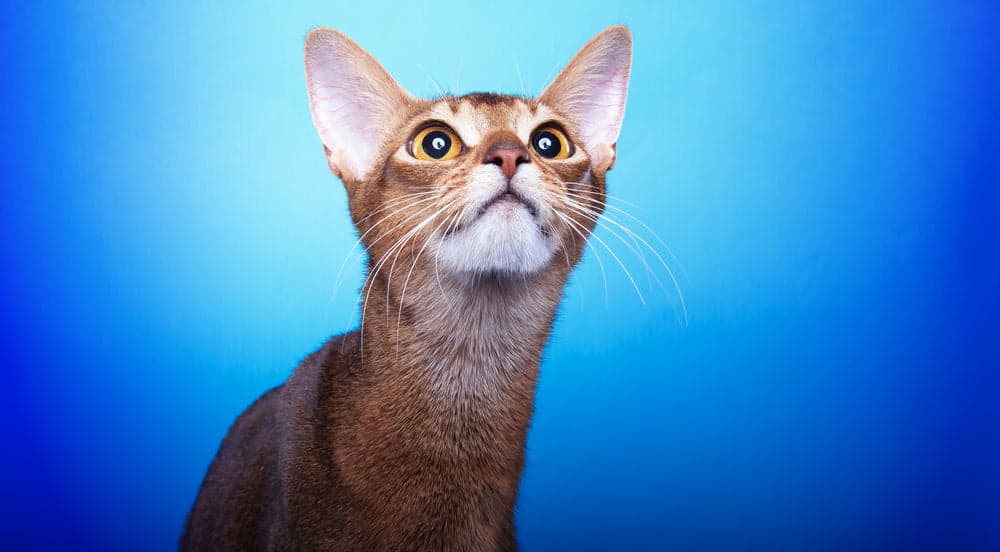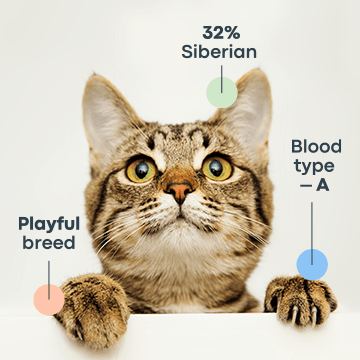Black, white, brown, orange, or a bit of everything? Cats come in so many different colors and patterns that it’s simply too difficult to choose a favorite. The captivating colors of your special little kitty are written in its DNA, and some variations seem to be particularly beautiful and rare. Here are the top 10 rarest coat colors and patterns in cats. Do you have a favorite?
“The cat has been described as the most perfect animal, the acme of muscular perfection and the supreme example in the animal kingdom of the coordination of mind and muscle.” – R. Ambrose-Brown.
Background on Cat Coat Colors and Patterns
Before we dive into some of the rare gems of color that some kitties display, it is worth mentioning that feline coat color, pattern, texture, and length are all determined by a variety of different genes.
Cat coat genetics is complex, and geneticists are still learning new information about every associated gene, its variants, expression, and the many different interactions that some genes have with other genes. This article touches upon but a few of the rarest coat colors and patterns in cats. Enjoy!
1. Chocolate
The chocolate (or brown) coat color is encoded by a recessive allele b of the primary gene for coat color (B/b/b1). The dominant version of this gene, (B), codes for black fur, and because it’s a dominant allele, it’s naturally a lot more commonly observed than brown fur. For a cat to appear brown, it has to carry two recessive alleles (homozygous) for brown coloration (b/b). The intensity and pattern of the brown coat will be further shaped by other coat-related genes.

The chocolate coat is a signature of the Havana Brown, and the Oriental Shorthair can exhibit chocolate in a variety of patterns (more than any other breed). Chocolate point is typically seen in the Thai Siamese and Balinese cat breeds.
2. Cinnamon
The cinnamon coat is also encoded by a recessive allele (b1) of the primary gene for coat color (B/b/b1). Like the chocolate gene, a cat has to be homozygous for this gene (b1/b1) in order to express the cinnamon color, which is why it’s a lot less frequently observed than black fur. The intensity and pattern of the cinnamon coat will be further shaped by other coat-related genes.

The beautiful ticked coat pattern that is the signature of the Abyssinian often comes in a cinnamon color (in addition to blue, ruddy, and fawn).
3. Smoke
The smoke color is a variation of the black color, determined by the primary gene for coat color (B/b/b1), and diluted by the dense pigment gene (D/d). The recessive allele of the dense pigment gene (d) alters the expression of other color-associated genes, which results in diluted pigmentation. In order for a cat to be smoke colored, it has to be a carrier of the dominant allele of the primary gene for coat color (B/B, B/b or B/b1), and it also has to be a recessive homozygote for the dense pigment gene (d/d).

Maine Coon cat displaying the black smoke coat color pattern
The black smoke coat effect is rare. It is characterized by a "hidden" white layer of hairs that are closest to the skin, with the outermost portion of coat hairs a solid black. Black smoke is a color pattern that can be seen in longhaired Egyptian Maus, Norwegian Forest Cats, Maine Coons, and Siberian Cats (though other breeds can exhibit this color pattern).
4. Lilac
The lilac color is a variation of the brown color, determined by the recessive allele b of the primary gene for coat color (B/b/b1), and diluted by the dense pigment gene (D/d). The mechanism of formation of this color is similar to that of the smoke color. In order for a cat to be lilac, it has to be a recessive homozygote for the primary gene for coat color (b/b), and it also has to be a recessive homozygote for the dense pigment gene (d/d).

British Shorthair cat, with a lilac coat color
The Sphynx, Ragamuffin, Selkirk Rex, British Shorthair, and the Burmese are among the cat breeds that may display the lilac coat color.
5. Fawn
The fawn color is a variation of the cinnamon color, determined by the recessive gene b1 of the primary gene for coat color (B/b/b1) and diluted by the dense pigment gene (D/d). The mechanism of formation of this color is similar to that of the smoke and lilac colors. In order for a cat to be fawn, it has to be a recessive homozygote for the primary gene for coat color (b1/b1), and it also has to be a recessive homozygote for the dense pigment gene (d/d).

This coat color is typically seen in the Oriental Shorthair or the Abyssinian, though other breeds may display the color if they have been specifically bred for this trait.
6. Cream
The cream color is a variation of the orange color, determined by the red gene (O/o), and diluted by the dense pigment gene (D/d). The red gene, found on the X chromosome, determines whether there will be any red variations to fur color or not. The dominant allele O codes for orange tones.

The mechanism of formation of this color is similar to that of the diluted colors described above. In order for a cat to be cream, it has to carry the dominant allele of the red gene (O/O or O/o), and it has to be a recessive homozygote for the dense pigment gene (d/d).
The beautiful Birman cat can exhibit a cream coat color, often in colorpoint pattern. The Munchkin cat comes in all coat colors and patterns, and cream is but one of the colors that this sweet "Sausage Cat" comes in.
7. Chinchilla Pattern
The chinchilla coat pattern is the silver tipped pattern in which the bases of the hairs are faded (only half of each hair or the tips are actually pigmented). This is the result of the melanin inhibitor gene (I/i). The dominant allele of this gene (I) suppresses eumelanin production, which fades the base of hair in solid cats (making them silver smoke), and turning tabbies into a sparkling silver color while leaving the stripes intact. The chinchilla pattern is the tabby variant affected by this melanin inhibitor gene, causing only the very tips of the hairs to be colored.

8. Colorpoint Pattern
Color-pointed pattern is often associated with Siamese and Himalayan cats, and although the pattern can occur in non-related cats as well, it is still one of the rarest coat colors in cats.

The pointed pattern is a form of partial albinism caused by a mutation in the gene that codes for tyrosinase, an enzyme involved in the production of melanin (C/c/c1). The mutated version of this enzyme is heat-sensitive, and it fails to work at normal body temperatures. It activates only in cooler areas of the skin (lower than 33 °C). Therefore, the coolest parts of a cat’s body, such as its extremities and face, will be pigmented darker than the rest.
10. Rosette Pattern
The rosette pattern is also known as the spotted tabby pattern, and it is determined by the agouti gene. This is a rarer variant of the pattern, and it is commonly observed among Bengals, Serengetis, Egyptian Maus, Arabian Maus, Maine Coons and other breeds.

Basepaws has you covered if you want to learn more about cat coat genetics, and interesting phenomena such as epistasis, where the observable expression (phenotype) of a gene—such as one responsible for the color of your kitty's coat—gets modified in some way by a completely different gene that has the ability to mask, suppress, or otherwise inhibit how that coat color gene is expressed.
Get To Know Your Cat Better With Basepaws
If you want to get to know your cat better—both inside and out—grab a Basepaws Breed + Health Cat DNA Test to get a comprehensive overview of every aspect of your cat's health. Learn about the genetic traits responsible for your favorite feline's beautiful coat color and pattern while also gaining vital information about their risk for developing common genetic diseases. With a quick and painless swab of your cat's mouth in the convenience of your home, you can be "in the know" about their health to help them live a better life, even longer!
Wondering whether your kitty has the genes for the colorpoint pattern, or a black coat color? Get a Basepaws Cat DNA Test today to find out!




